![IHC-P analysis of human angiosarcoma tissue using GTX21316 VEGFA antibody [VG1]. IHC-P analysis of human angiosarcoma tissue using GTX21316 VEGFA antibody [VG1].](https://www.genetex.com/upload/website/prouct_img/normal/GTX21316/GTX21316_20191203_IHC-P_81_w_23060620_281.webp)
IHC-P analysis of human angiosarcoma tissue using GTX21316 VEGFA antibody [VG1].
VEGFA antibody [VG1]
GTX21316
ApplicationsFlow Cytometry, ImmunoFluorescence, Western Blot, ELISA, ImmunoCytoChemistry, ImmunoHistoChemistry, ImmunoHistoChemistry Frozen, ImmunoHistoChemistry Paraffin
Product group Antibodies
TargetVEGFA
Overview
- SupplierGeneTex
- Product NameVEGF antibody [VG1]
- Delivery Days Customer9
- Application Supplier NoteIHC-P: 1:20-1:40. *Optimal dilutions/concentrations should be determined by the researcher.Not tested in other applications.
- ApplicationsFlow Cytometry, ImmunoFluorescence, Western Blot, ELISA, ImmunoCytoChemistry, ImmunoHistoChemistry, ImmunoHistoChemistry Frozen, ImmunoHistoChemistry Paraffin
- CertificationResearch Use Only
- ClonalityMonoclonal
- Clone IDVG1
- ConjugateUnconjugated
- Gene ID7422
- Target nameVEGFA
- Target descriptionvascular endothelial growth factor A
- Target synonymsL-VEGF, MVCD1, VEGF, VPF, vascular endothelial growth factor A, long form, vascular endothelial growth factor A121, vascular endothelial growth factor A165, vascular permeability factor
- HostMouse
- IsotypeIgG1
- Protein IDP15692
- Protein NameVascular endothelial growth factor A
- Scientific DescriptionThis gene is a member of the PDGF/VEGF growth factor family. It encodes a heparin-binding protein, which exists as a disulfide-linked homodimer. This growth factor induces proliferation and migration of vascular endothelial cells, and is essential for both physiological and pathological angiogenesis. Disruption of this gene in mice resulted in abnormal embryonic blood vessel formation. This gene is upregulated in many known tumors and its expression is correlated with tumor stage and progression. Elevated levels of this protein are found in patients with POEMS syndrome, also known as Crow-Fukase syndrome. Allelic variants of this gene have been associated with microvascular complications of diabetes 1 (MVCD1) and atherosclerosis. Alternatively spliced transcript variants encoding different isoforms have been described. There is also evidence for alternative translation initiation from upstream non-AUG (CUG) codons resulting in additional isoforms. A recent study showed that a C-terminally extended isoform is produced by use of an alternative in-frame translation termination codon via a stop codon readthrough mechanism, and that this isoform is antiangiogenic. Expression of some isoforms derived from the AUG start codon is regulated by a small upstream open reading frame, which is located within an internal ribosome entry site. [provided by RefSeq, Nov 2015]
- Storage Instruction2°C to 8°C
- UNSPSC12352203
References
- Allicin, an Emerging Treatment for Pulmonary Arterial Hypertension: An Experimental Study.Read more
- Effects of Allicin on Pathophysiological Mechanisms during the Progression of Nephropathy Associated to Diabetes. Arellano-Buendia AS et al., 2020 Nov 15, Antioxidants (Basel)Read more
- Novel human Ab against vascular endothelial growth factor receptor 2 shows therapeutic potential for leukemia and prostate cancer. Lu RM et al., 2019 Dec, Cancer SciRead more
- Selective IKK2 inhibitor IMD0354 disrupts NF-kappaB signaling to suppress corneal inflammation and angiogenesis. Lennikov A et al., 2018 May, AngiogenesisRead more
- Genome-wide expression differences in anti-Vegf and dexamethasone treatment of inflammatory angiogenesis in the rat cornea. Mirabelli P et al., 2017 Aug 15, Sci RepRead more
- MiR-182 promotes proliferation and invasion and elevates the HIF-1alpha-VEGF-A axis in breast cancer cells by targeting FBXW7. Chiang CH et al., 2016, Am J Cancer ResRead more
- Factors regulating capillary remodeling in a reversible model of inflammatory corneal angiogenesis. Mukwaya A et al., 2016 Aug 26, Sci RepRead more
- Aging disrupts cell subpopulation dynamics and diminishes the function of mesenchymal stem cells. Duscher D et al., 2014 Nov 21, Sci RepRead more
- Antiangiogenic treatment diminishes renal injury and dysfunction via regulation of local AKT in early experimental diabetes. Bai X et al., 2014, PLoS OneRead more
- Expression of pro- and anti-angiogenic isoforms of VEGF in the mouse model of oxygen-induced retinopathy. Zhao M et al., 2011 Dec, Exp Eye ResRead more

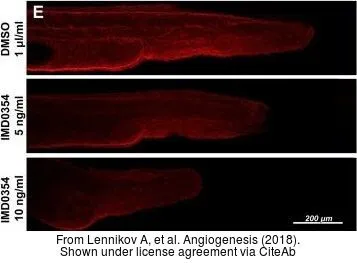

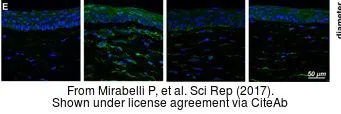
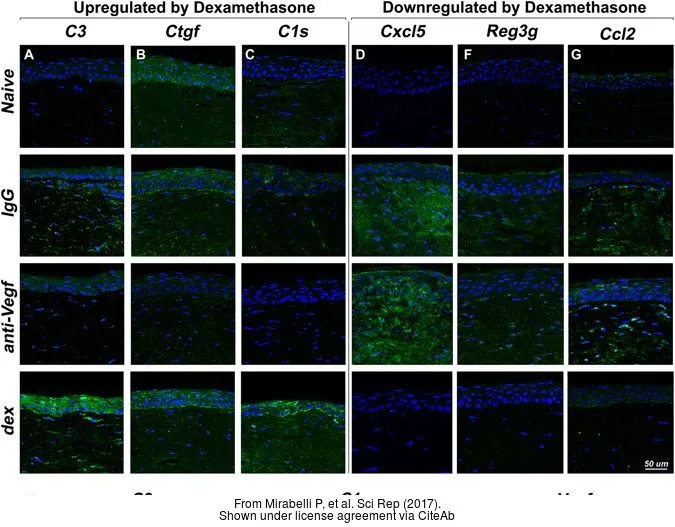
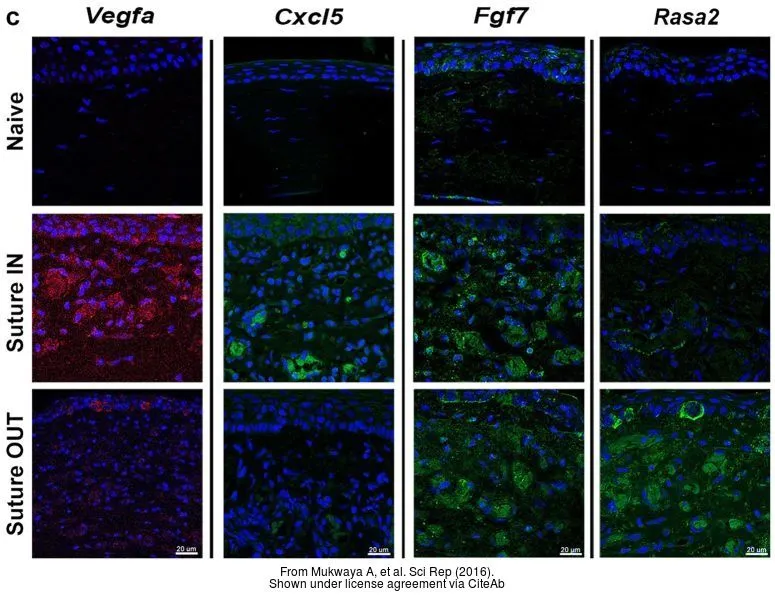
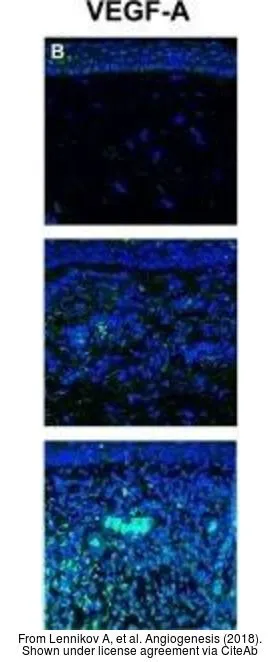
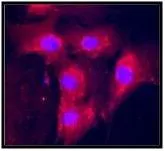
![IHC-P analysis of human liver carcinoma tissue using GTX83425 VEGFA antibody [4G3].](https://www.genetex.com/upload/website/prouct_img/normal/GTX83425/GTX83425_1356_IHC-P_w_23061419_454.webp)
![IHC-P analysis of human breast adenocarcinoma tissue using GTX83426 VEGFA antibody [4E3]. Antigen retrieval : Heat-induced epitope retrieval by 10mM citrate buffer, pH6.0, 100oC for 10min.](https://www.genetex.com/upload/website/prouct_img/normal/GTX83426/GTX83426_1358_IHC-P_w_23061419_344.webp)